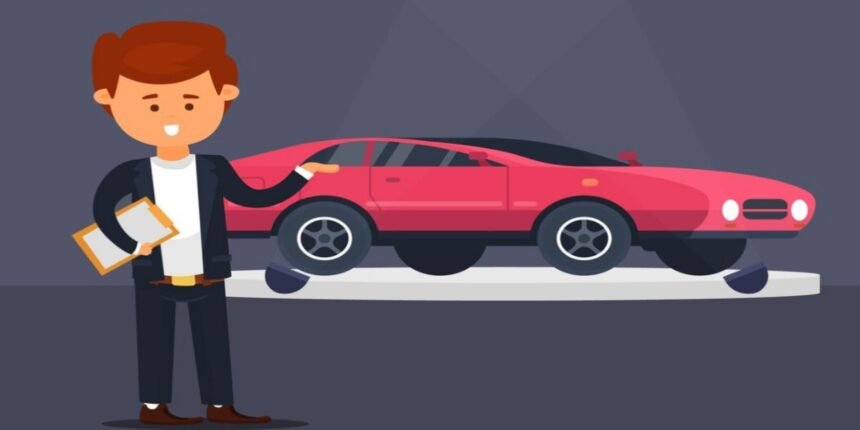If you’ve ever had a car accident, you’ll know that sinking feeling when you’re waiting to hear from the insurance company. And then they say the words you’ve been dreading: “It’s a write-off.” It sounds so final, doesn’t it? Like the car is destined for the crusher, no questions asked.
But here’s the thing: it’s not always that simple. There are different types of write-offs, and what happens to your car depends on which category it’s been put in. These categories are known as Cat A, Cat B, Cat S, and Cat N. They might sound like a load of jargon, but they’re really important. They determine whether your car can be repaired, or if the vehicle has to be scrapped.
This guide is all about demystifying these categories. We’re going to break down what each one means and what your options are if your car has been written off.
What is a Write-Off, Anyway?
First off, let’s be clear about what a write-off is. It’s an insurance term. It means that the insurance company has decided that it’s not worth repairing your car. This could be because the damage is so bad that it’s unsafe to repair, or it could simply be that the cost of the repairs is more than the car is worth. It’s an economic decision for them.
In 2017, the write-off categories were updated. The old Cat C and Cat D were replaced with Cat S and Cat N. The new system is a bit clearer, as it focuses on the type of damage, not just the cost of repair.
The Categories Explained
Let’s go through them one by one, from the most serious to the least.
Category A: Scrap Only
This is the worst-case scenario. A Cat A write-off means the car is so badly damaged that it’s not safe to be on the road ever again. We’re talking about a car that’s been in a major crash or a fire. It’s a total loss. Not only can the car not be repaired, but none of its parts can be salvaged either. The entire car, including all its parts, must be crushed. You won’t be able to buy it back from the insurance company. It’s game over.
Category B: Break for Parts
Cat B is a step down from Cat A, but it’s still pretty serious. It means the car has suffered major structural damage and the body shell cannot be repaired. It has to be crushed. However, unlike a Cat A car, some of its parts can be salvaged and used in other vehicles. Things like the engine, seats, and stereo might still be perfectly fine. An Authorised Treatment Facility (ATF) can strip these parts off before the rest of the car is destroyed. You, as the owner, won’t be able to buy the whole car back, but you might be able to buy back some of the salvaged parts.
Category S: Structurally Damaged but Repairable
This is where things get a bit more interesting. A Cat S car has suffered structural damage. This means that a key part of its frame or chassis has been damaged in the accident. This could be anything from a bent chassis to a crumpled crumple zone. The insurance company has decided that it’s not economical for them to repair it.
But here’s the key difference: a Cat S car can be repaired and put back on the road. You have the option to buy the car back from the insurance company. They’ll pay you the value of the car, minus the salvage value (the amount they’d get for it as scrap). You can then get it repaired by a professional. It will need to be re-registered with the DVLA before it can be driven again. It will always be recorded as a Cat S vehicle, which will affect its future resale value.
Category N: Non-Structurally Damaged but Repairable
Cat N is the least severe category. It means the car has been written off, but the damage is not structural. It might be cosmetic damage, like a smashed bumper or a dented door. Or it could be a problem with the electrics. The insurance company has still decided that it’s not worth their while to repair it.
Just like a Cat S car, you can buy a Cat N car back from the insurer and get it repaired. The big difference is that you don’t need to re-register it with the DVLA. You can just get it fixed, get a new MOT, and you’re good to go. However, just like a Cat S, it will always be recorded as a Cat N vehicle, which will make it harder to sell in the future.
So, What Should You Do?
If your car has been written off as a Cat S or Cat N, you’ve got a decision to make. Do you take the insurance payout and let the car go? Or do you buy it back and get it repaired?
Here’s what to consider:
- The cost of repairs: Get a quote from a trusted garage. Is it really worth it?
- The future value: A written-off car will always be worth less than a non-damaged one. You need to factor this in.
- The hassle factor: Getting a written-off car back on the road can be a lot of work. Are you prepared for it?
If you decide not to repair it, or if your car is a Cat A or Cat B, then you’ll need to scrap it. The insurance company will usually handle this for you. They’ll arrange for it to be collected by an ATF and you’ll get a Certificate of Destruction.
Understanding the write-off categories can save you a lot of confusion and help you make the right decision. It’s not always as black and white as it seems. But by knowing your options, you can make the best of a bad situation.







